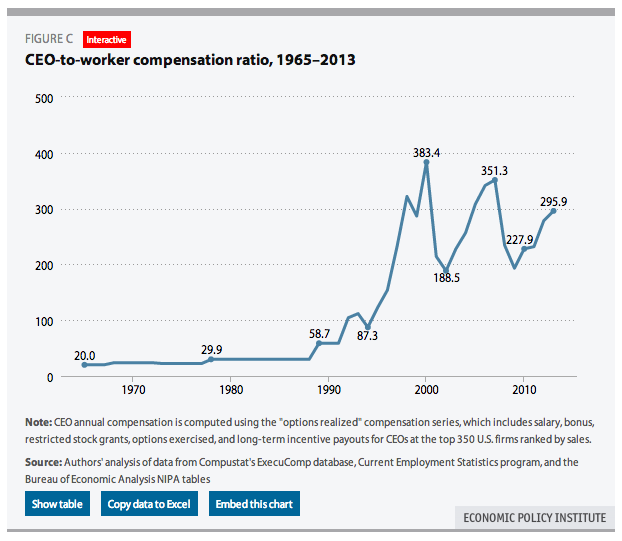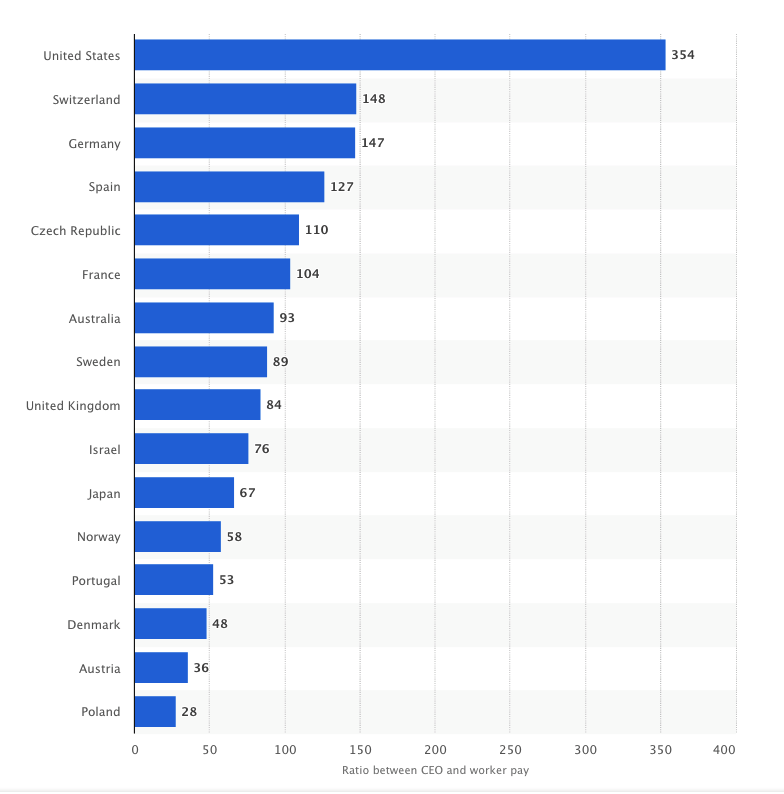The Current State of the H1-B Program Versus its Original Design
Executive Summary
- The H1-B visa has been corrupted from its original intent.
- This is shown in merely reading the history of the H1-B visa.

Introduction
The H1-B visa program has been radically changed from its original intent and rigged by major IT companies. In this article, we will review this original intent to see how far the program has degenerated.
Several different types of visas were established, including a H-1 visa for “an alien having a residence in a foreign country which he has no intention of abandoning who is of distinguished merit and ability and who is coming temporarily to the United States to perform temporary services of an exceptional nature requiring such merit and ability.”[73] The term “distinguished merit and ability” was not new to United States immigration law; it had previously been used as a qualification for musicians and artists who had wanted to enter the United States.
The Immigration Act of 1990 was signed into law by President George H. W. Bush on November 20, 1990. The H-1 visa was replaced by two different visas. An H-1A visa was created for nurses, and the H-1B visa was established for workers in a “specialty occupation”.
The Immigration Act defined a specialty occupation as “an occupation that requires theoretical and practical application of a body of highly specialized knowledge, and attainment of a bachelor’s or higher degree in the specific specialty (or its equivalent) as a minimum for entry into the occupation in the United States”. – Wikipedia
It is difficult to see how many H1-B visa holders have “highly specialized knowledge.”
At Brightwork Research & Analysis, we have recent college graduates from India who request that we sponsor them for H1-B visas. Indians in India know that many of other Indians have been let into the H1-B program without specialized knowledge, and they want in on the scam.
According to Senator Chuck Grassley of Iowa, chairman of the committee:
The program was intended to serve employers who could not find the skilled workers they needed in the United States. Most people believe that employers are supposed to recruit Americans before they petition for an H-1B worker. Yet, under the law, most employers are not required to prove to the Department of Labor that they tried to find an American to fill the job first. And, if there is an equally or even better qualified U.S. worker available, the company does not have to offer him or her the job. Over the years the program has become a government-assisted way for employers to bring in cheaper foreign labor, and now it appears these foreign workers take over – rather than complement – the U.S. workforce. – Wikipedia
Yes, Chuck Grassley is correct. So why does the H1-B program exist in its present form, and why is it allowed to continue to expand. Money, pure and simple. See our article Why Are 47 Entities Lobbying in Favor of the H.R.1044 IT Immigration Bill?
And then look at who is receiving the lobbying money in our article What Politicians are Co-Sponsoring of the H.R.1044 IT Immigration Bill?
H1-B Fraud
The H1-B program has become a hotbed for fraud, and the US Department of Labor cannot be bothered to do anything about it, even though they are tasked with policing the H1-B program. With multinational conglomerates repeatedly lying about how they are using the program and continually decrying their inability to make profits unless they can use the H1-B program to displace US workers.

Poor companies can’t seem to make profits. In the mid-1960s, the average CEO made 20x what the ordinary workers made in total compensation. Now the number is routinely above 300x.

Without more H1-B visas, US CEOs may not be able to hit their goal of having a 500x compensation level versus their workers.
Senators Dick Durbin and Charles Grassley of Iowa began introducing “The H-1B and L-1 Visa Fraud & Prevention Act” in 2007. According to Durbin, speaking in 2009, “The H-1B visa program should complement the U.S. workforce, not replace it;” “The…program is plagued with fraud and abuse and is now a vehicle for outsourcing that deprives qualified American workers of their jobs.” The proposed legislation has been opposed by Compete America, a tech industry lobbying group. – Wikipedia
Toothless Enforcement of US Worker Displacement
Even in the most egregious cases, where companies have entirely displaced US workers in violation of the H1-B law, the US Department of Labor, which now works for multinationals has done nothing.
In June 2015, ten Senators requested the U.S. Department of Labor open an investigation of outsourcing of technical tasks by Southern California Edison to Tata Consultancy Services and Infosys then laying off 500 technology workers.[145][146] After a ten-month investigation, the U.S. Department of Labor determined that no charges should be filed against any of the firms. – Wikipedia
And this occurred at Disney, with again no action taken by the Department of Labor.
About 250 Disney employees were told in late October that they would be laid off. Many of their jobs were transferred to immigrants on temporary visas for highly skilled technical workers, who were brought in by an outsourcing firm based in India. Over the next three months, some Disney employees were required to train their replacements to do the jobs they had lost.
“I just couldn’t believe they could fly people in to sit at our desks and take over our jobs exactly,” said one former worker, an American in his 40s who remains unemployed since his last day at Disney on Jan. 30. “It was so humiliating to train somebody else to take over your job. I still can’t grasp it.” – New York Times
Disney Then Lies About the Displacement
Disney executives said that the layoffs were part of a reorganization, and that the company opened more positions than it eliminated. – New York Times
$500/$1000 For Retraining and Reducing the Need for Future H1-Bs?
President Bill Clinton signed the American Competitiveness and Workforce Improvement Act into law on October 21, 1998. The law required that each application for an H-1B must include an additional $500 payment, which would be used for retraining U.S. workers in order to reduce the need for H-1B visas in the future. The quota of H-1B visas was increased from 65,000 to 115,000 for fiscal years 1999 and 2000 only. For an employer with a large number of employees in H-1B status or who had committed a willful misrepresentation in the recent past, the employer attest that the additional H-1B worker would not displace any U.S. workers.[78] The act also gave investigative authority to the United States Department of Labor. – Wikipedia
The fact that the amount paid was $500 shows that this was a severe change to the H1-B law. This is because $500 does not buy very much training — and it did not work, because the desire has been to keep the H1-B program open in perpetuity. This fee was later increased to a whole $1,000. It is also unclear where this $1,000 went because I have never heard of any US government supported retraining program for IT workers. Notice this quotation.
In 2007, the U.S. Department of Labor, Employment and Training Administration (ETA), reported on two programs, the High Growth Training Initiative and Workforce Innovation Regional Economic Development (WIRED), which have received or will receive $284 million and $260 million, respectively, from H-1B training fees to educate and train U.S. workers.[citation needed] According to the Seattle Times $1 billion from H-1B fees have been distributed by the Labor Department to further train the U.S. workforce since 2001.[138]
I have never heard of this program. And given the number of IT workers in the country that is a very paltry sum.
Amazingly, the program was recommended to be terminated by the 2nd Bush Administration.
It later changed its stance in 2002 when the Bush administration proposed canceling the training programs that had been funded with H-1B user fees. – eWeek
Secondly, the best way to allow for training is not to enable H1-B workers to come in en mass, close to 1 million in just six years (2001-2003, 2010-2012), and instead to have companies, train workers. Why has training been allocated as a responsibility to the government? Mainly when so many tax dollars already go to the US high school and community college and university systems?
Furthermore, something that the H1-B program did not know when it was being designed was that Indian universities are not to the standard of US universities. It is quite easy to obtain watered-down credentials in India.
The Fatal Flaw in the H1-B Program: The Loophole That Allows for Large Scale US Domestic Worker Displacement
Reading the literature around the H1-B visa program, it is clear what the original intent of the program was. However, when a loophole was added that companies applying for H1-B visas do not have to be concerned with proving they are not displacing US domestic workers. As long as they paid at least $60,000, this took the H1-B program to a place that was not the original intent. This loophole is an invitation for companies to displace as many US domestic workers as they can, as they can not only immediately add to their profitability. But the H1-B program allows them to highly control H1-B workers in a way they cannot with US citizens, as we cover in the article How H1-B Law Ties US Citizenship to the Employer.
Conclusion
The origins of the H1-B program show how it has been entirely perverted from its original intent.
- Only a small minority of the H1-B visa holders that have been brought into the US from India over the past several decades have met the intent of the H1-B program.
- If the money obtained from companies applying for H1-B visas was designed to provide training so that H1-Bs would no longer be necessary, then why 12 years after this adjustment to the H1-B program passed, is the H1-B program continuing to expand?
- If the H1-B program was designed for temporary workers, do most of the H1-B visa recipients eventually become US citizens?
The H1-B program has become a mechanism to displace US workers in broadscale — something that the program was explicitly stipulated not to do.
References
*https://www.nytimes.com/2015/06/04/us/last-task-after-layoff-at-disney-train-foreign-replacements.html
http:// www.eweek.com/article2/0,4149,3023317,00.asp
https://en.wikipedia.org/wiki/H-1B_visa